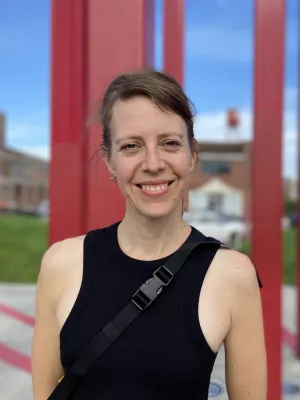
Melissa García
Associate senior lecturer

Adapting the environmental risk transition theory for urban health inequities : An observational study examining complex environmental riskscapes in seven neighborhoods in Global North cities
Author
Summary, in English
Theories of epidemiologic transition analyze the shift in causes of mortality due to changes in risk factors over time, and through processes of urbanization and development by comparing risk factors between countries or over time. These theories do not account for health inequities such as those resulting from environmental injustice, in which minority and lower income residents are more likely to be exposed to environmental hazards or have less access to environmental goods. Neighborhoods with histories of environmental injustice are also at risk for gentrification as they undergo environmental improvements and new greening projects. We aimed to understand how environmental injustice, urban renewal and green gentrification could inform the understanding of epidemiologic risk transitions. We examined 7 case neighborhoods in cities in the United States and Western Europe which were representative in terms of city region and type, which 1) had experienced a history of environmental injustice and 2) exhibited evidence of recent processes of urban renewal and/or gentrification. In each city, we conducted semi-structured qualitative interviews (n = 172) with city representatives, activists, non-profits, developers and residents. Respondents reported health implications of traditional (heavy pollutants, poor social conditions), transitional (decontamination, new amenities), new (gentrification, access to amenities), and emerging (displacement, climate-related risks, re-emergence of traditional exposures) exposures. Respondents reported renewed, complexified and overlapping exposures leading to poor mental and physical health and to new patterns of health inequity. Our findings point to the need for theories of environmental and epidemiologic risk transitions to incorporate analysis of trends 1) on a city-scale, acknowledging that segregation and patterns of environmental injustice have created unequal conditions within cities and 2) over a shorter and more recent time period, taking into account worsening patterns of social inequity in cities.
Publishing year
2021-05
Language
English
Publication/Series
Social Science and Medicine
Volume
277
Links
Document type
Journal article
Publisher
Elsevier
Topic
- Human Geography
Keywords
- Environmental justice
- Environmental risk transition
- Gentrification
- Health equity
Status
Published
ISBN/ISSN/Other
- ISSN: 0277-9536